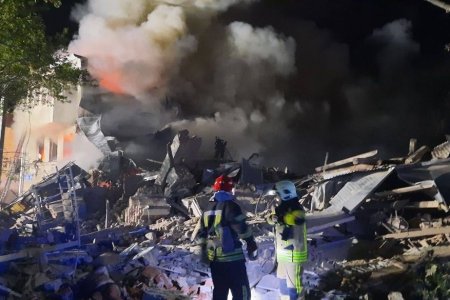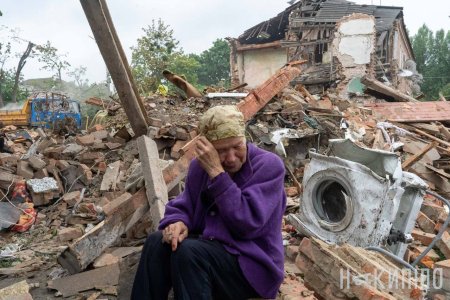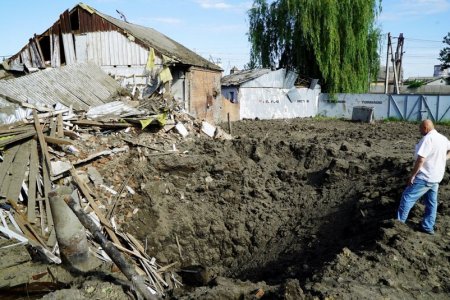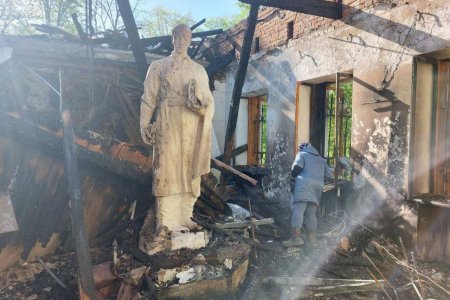
Yevgeny Zakharov (KHPG) and Tatyana Samoderzhenkova (Ukrainian Helsinki Human Rights Union) identify genocidal acts by Russia’s armed forces against the inhabitants of Mariupol.
The 1948 Convention
According to Article II of the 1948 Convention on Genocide, the term genocide is understood to mean [1] “any of the following acts committed with intent to destroy, in whole or in part, a national, ethnical, racial or religious group”:
- Killing members of the group;
- Causing serious bodily or mental harm to members of the group;
- Deliberately inflicting on the group conditions of life calculated to bring about its physical destruction in whole or in part;
- Imposing measures intended to prevent births within the group;
- Forcibly transferring children of the group to another group.
According to Article III of the 1948 Convention, the following acts shall be punishable:
- Genocide;
- Conspiracy to commit genocide;
- Direct and public incitement to commit genocide;
- Attempts to commit genocide;
- Complicity in genocide.
It must be separately substantiated that there was a direct and public incitement to commit genocide.
According to the International Criminal Tribunal for Rwanda, the term ‘national group’ refers to “a collection of people who are perceived to share a legal bond based on common citizenship, coupled with reciprocity of rights and duties”.[2]
We shall consider the Ukrainian nation (its citizens) to be the target of acts of genocide by Russia, the Aggressor State.
Ukraine, 2022
“It is well established that where a conviction for genocide relies on the intent to destroy a protected group ‘in part’,” noted the Appeals Chamber of the International Criminal Tribunal for the former Yugoslavia in 2004 [3], that
“the part must be a substantial part of that group. The aim of the Genocide Convention is to prevent the intentional destruction of entire human groups, and the part targeted must be significant enough to have an impact on the group as a whole.”
The practice of International Criminal Tribunals (for the former Yugoslavia, for Rwanda) demonstrates that for a deed to be classified as genocide it is sufficient that the perpetrator of the crime intended to eliminate a significant part of the group. In determining what part of a group can be considered “significant”, both quantitative and qualitative indicators should be applied. For example, the Trial Chamber of the Tribunal for Former Yugoslavia in its judgment in the case of Jelisic (1999) [4] stressed that:
“No. 82. […]Genocidal intent may … be manifest in two forms. It may consist of desiring the extermination of a very large number of the members of the group, in which case it would constitute an intention to destroy a group en masse. However, it may also consist of the desired destruction of a more limited number of persons selected for the impact that their disappearance would have upon the survival of the group as such. This would then constitute an intention to destroy the group ‘selectively’.”
As defined above the protected group is significant both in numbers and in the identity of those targeted: it includes the Ukrainian elite and the vast majority of the population of Ukraine. Today, the majority of Ukrainians are divided between those directly fighting the invaders, and those helping the war effort in every way they can.
The determining qualification for the crime of genocide under the Genocide Convention is the existence of a direct intent to destroy the members of the relevant group by virtue of their belonging to it. The acts listed under Article II of the Convention clearly require the presence of certain subjective factors, among which intent, as a necessary component of the crime of genocide, is the defining qualification [5] of the crime:
“No. 187. […] Article II requires … the establishment of the ‘intent to destroy, in whole or in part, {the protected} group, as such’.”
Ukrainians have no doubt that the goal of the Russian Federation in the war against Ukraine is the destruction of the Ukrainian State and that part of Ukrainians who consider themselves citizens of Ukraine and do not agree to submit to the Aggressor State. This goal forms a genocidal intent. It was conducted differently in various parts of Ukraine– in the city of Mariupol, and in the Kyiv and Kharkiv Regions. Therefore, in our opinion, a separate analysis of the genocide in each region is necessary.
The example of Mariupol
This article is dedicated to the genocide in Mariupol, the second largest city in the Donetsk Region
The group protected in the terms of the 1948 Genocide Convention is a national group made up of citizens of Ukraine living in Mariupol (c. 450,000 people).
One proof that Putin’s “special operation” was directed against Ukrainians was the Russian President’s agreement on 2 April 2022 (according to Russian media) to the request of Turkish President Erdogan to allow foreigners still in Mariupol to evacuate safely towards Berdiansk.[6]
Four of the five defining acts of genocide are applicable, in our view, to the case of Mariupol.
1. Killing group members
This definition of genocide is obviously met.
The city was under siege from 26 February onwards, and from the first day of the war was constantly bombed and shelled by enemy aircraft and artillery. Thousands of Mariupol residents died. On 13 March 2022, the Mariupol city council announced that 2,187 deaths had been registered.[7] The true figures were much higher. Due to the constant shelling of that large city and the destruction of the local internet, identification and registration of the dead were subjected to insurmountable difficulties and obstacles. The Mayor of Mariupol, Vadim Boychenko, was closer to reality when, on 14 March 2022, he estimated that up to twenty thousand people in the city had lost their lives.[8]
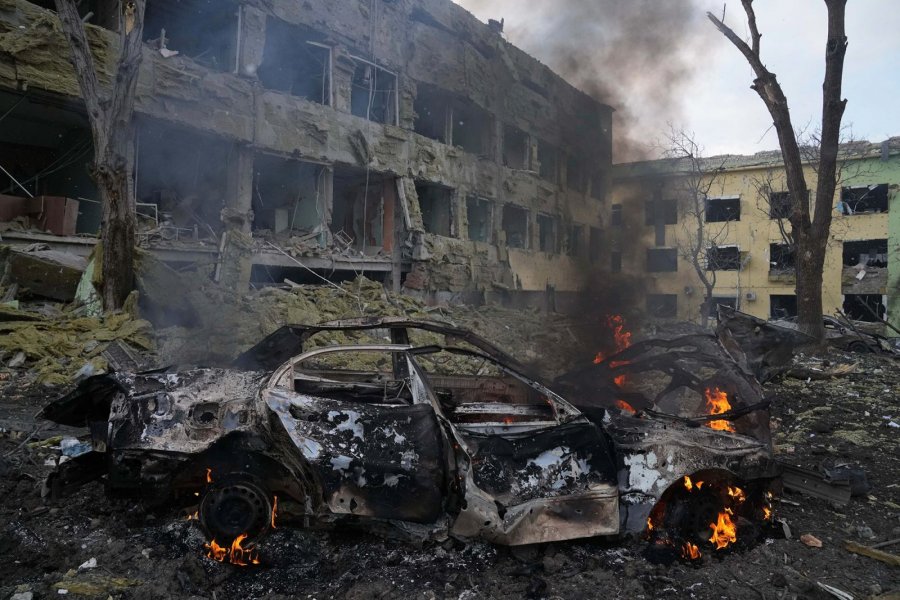
Numerous residential buildings, a maternity hospital and a children's hospital, in which women in labour and babies were kept, as well as a drama theatre, a swimming pool, dormitories and an art school, where civilians were hiding, were bombed and shelled by Russian troops. In particular, about one thousand people found refuge in the theatre.[9] Satellite imagery on 14 March 2022 shows the word “CHILDREN” written in Russian in two locations on the exterior of the building; this was an attempt to identify the theatre to Russia’s armed forces as a civilian shelter containing children not soldiers. Representatives of the Mariupol City Council said the theatre was the city's only bomb shelter, and no one but women and children were there at the time of the attack on 16 March.
According to information from the city morgue there have been 87,000 deaths in the city since 26 February.[10] The full extent of the killings in Mariupol will not be known until the city is liberated.
2. Causing serious bodily or mental harm
Russian troops systematically and directly attacked residential buildings, shelters and escape routes in Mariupol, causing the deaths of civilians. During the shelling of the city a substantial number of people were seriously injured. This was recorded by doctors who remained in the city and worked during the period of active hostilities.[11] There were no medical supplies or medicaments, making it impossible for doctors to provide the necessary assistance. Many people died in Mariupol from injuries and chronic diseases due to the lack of medicines.[12]
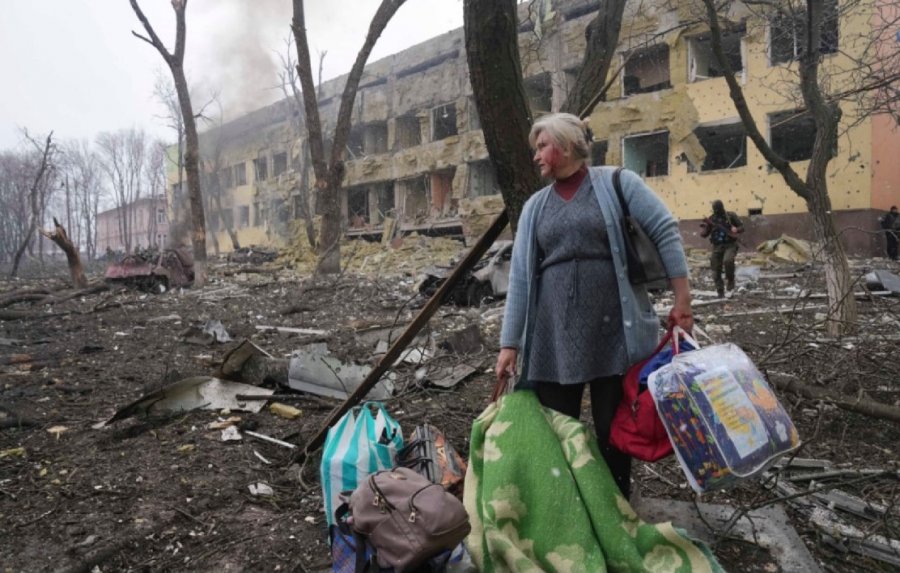
After 26 February 2022, residents could not leave the city. Constant air strikes and the shelling of residential buildings forced people to live in basements unsuitable for human habitation. Lack of heating and electricity forced the inhabitants of the city to sleep on the ground. They endured freezing temperatures in the basement: outside it was minus 10 degrees centigrade; inside the temperature did not rise above freezing point. There was no access to food, water, or medicines. People were in a state of constant fear and perceived their situation as a living “hell”.[13]
3. Conditions calculated to bring about physical destruction
The wording of this definition accurately describes the situation that developed in and around Mariupol after the beginning of March 2022.
3.1 Living (and dying) in Mariupol
At the beginning of March 2022, Mariupol’s critical infrastructure (water, gas and electricity supplies, heating and communications) was destroyed by Russia’s armed forces. Later, medical facilities were deliberately targeted and destroyed on the pretext that Ukrainian soldiers were located there. In addition, humanitarian and evacuation corridors were closed. It was impossible to deliver water, food, medicine and children's necessities to the city.
Mariupol residents were forced to collect rainwater and boil technical water to drink; they cooked food on street fires; the dead were buried in mass graves in the courtyard.
The complete encirclement of Mariupol, the lack of access to food, water, and medicine, and the destruction of the city's critical infrastructure led to a significant deterioration in the health of city residents and in some cases resulted in death.
The relentless shelling and bombardment of Ukrainian citizens in the besieged areas by Russian forces, within and outside the city limits, created living conditions that would result in the physical destruction of the city’s inhabitants.
Russia’s armed forces also controlled the airspace over Mariupol, so all parts of the city were defenceless. Russia’s air dominance meant that the shelling of the city by missiles and artillery fire could not be countered: it was impossible to defend and save the city’s residential buildings, its communal and socio-cultural institutions and its businesses and factories from destruction. In just a few weeks, systematic shelling of residential areas by Russia’s armed forces destroyed more than 80% of the city’s houses and apartment blocks.[14] Mariupol became uninhabitable and normal life was rendered impossible in the near future.[15]
3.2 Evacuation from the city
During evacuation from the city, residents of Mariupol were forced to undergo a humiliating filtration procedure.
All residents, including children, were interrogated. The men had to strip to their underwear. People removed any information about their views of Ukraine from their mobile phones. Residents of Mariupol who did not pass the first stage of filtration were taken into custody and sent to filtration camps for 30 days. There they were kept in terrible conditions, which in themselves could be classified as torture. They were denied access to basic necessities, including toilets, and suffered constant abuse and beatings. Those who did not pass the second stage of filtration disappeared without trace.
*
These actions were all aimed at depriving civilians of essentials, keeping them in terrible conditions, while those whom the occupying authorities considered disloyal to Russia were imprisoned or disappeared.
Taken together, they confirm that these were indeed “conditions calculated to bring about physical destruction”.
4. Imposing measures to prevent birth
There is no evidence that this definition of genocide can be applied to the situation of Ukrainian citizens in Mariupol since February 2022.
5. Forcibly transferring children to another group
Information from sources in Russia and testimony by Mariupol residents confirm that children have been transferred to Donetsk and to cities in the Russian Federation.
Children, who lost their parents during the hostilities, were taken to hospitals in Donetsk. Their relatives had to search all the institutions of the “Donetsk People’s Republic”, as well as Russian humanitarian agencies based in Mariupol, before the children could again be located.
The organised removal of children from Mariupol for adoption was supported by Putin's 30 May decree simplifying the procedure for adopting children who arrived in Russia from Ukraine[16] and his 11 July decree [17] which simplified the acquisition of Russian citizenship. According to former Ukrainian ombudsperson Lyudmila Denisova, 2,161 orphans and children of parents deprived of their parental rights were transferred to Russian foster families this year. She was speaking in early June.
About the authors
Yevgeny Zakharov is the director of the Kharkiv Human Rights Protection Group (KHPG). Before the war Tatyana Samoderzhenkova headed the public reception office of the Ukrainian Helsinki Human Rights Union in Mariupol; she continues to head it today in exile.
SOURCES
1948 Genocide Convention
International Criminal Tribunal for the former Yugoslavia (1993-2017)
International Criminal Tribunal for Rwanda (1994-2015)
NOTES
[1] And see Article 6 (Genocide) of the 1998 Rome Statute of the International Criminal Court.
[2] William A. Schabas, Genocide in International Law. The Crime of Crimes (Cambridge: Cambridge University Press, 2000), “Chapter 3. Groups protected by the Convention”, quoted in Roman Serbyn, “The Ukrainian Famine of 1932-1933 and the UN Convention on Genocide”, The Ukrainian Quarterly, Vol. LXII, No. 2 (Summer 2006), reprinted on the KHPG website, 27 February 2008 (see note 15).
[3] Appeals Chamber Judgement in the Case the Prosecutor v. Radislav Krstic: press release, 19 April 2004
[4] Prosecutor v.Goran Jelisic, The International Tribunal for the former Yugoslavia (Trial Chamber I), Case No. IT-95-10 “Breko”, Judgement of 14 December 1999
[5] The Application of the Convention on the Prevention and Punishment of the Crime of Genocide (Bosnia and Herzegovina v. Serbia and Montenegro): the Judgment of 26 February 2007, p. 82.
[6] Russian occupying forces promise to let foreigners out from Mariupol—according to Russian media. Ukrayinska Pravda, 3.14.2022.
[7] City Council: Russian troops have killed 2,187 Mariupol residents. Ukrayinska Pravda, 3.13.2022
[8] An adviser to the Mariupol Mayor informed that 20,000 civilians have died in the city. Ukrayinska Pravda, 14.3.2022.
[9] “The Mariupol Drama Theatre”, Azov media, 10 March 2022 (in Russian).
[10] Oleg Kotov, “Mariupol morgue: Russian military killed about 90,000 people”, Socportal.info, 30 August 2022
[11] Sergy (Gorobtsov), Archbishop of Mariupol and Donetsk, “This lad Dima is from Mariupol”, Facebook (in Ukrainian), 18 April 2022.
“He did not leave the hospital for three days: the story of a trauma specialist[Victor Lokutov from Dnipro] who saved the wounded from Kramatorsk and Mariupol”, Vchasno news agency (in Ukrainian), 18 August 2022.
[12] Kateryna Rodak, “A 27-year-old doctor [Andrei Serbin] tells how he saved his own life under shelling in Mariupol. His story is amazing”, Zaxid.net (in Ukrainian), 28 April 2022.
[13] “Eyewitness accounts by photojournalists Serhiy Vaganov and Iryna Gorbacheva from Donetsk”, Ukrainska Pravda, 22 March 2022 (in Ukrainian).
[14] “80-90% of the city was bombed, says deputy mayor of Mariupol”, Ukrainska Pravda, 17 March 2022.
[15] “Satellite images taken by MAXAR Technologies and shared by The Guardian [London]: Burnt houses and a destroyed mall are shown by Mariupol satellite photos and a drone video”, Ukrainska Pravda, 18 March 2022 (in Ukrainian).
[16] “Putin signs a decree simplifying Russian citizenship procedure for orphans from Ukraine”, Ukrainska Pravda, 30 May 2022.
[17] 11 July decree No. 440, text in Russian.
